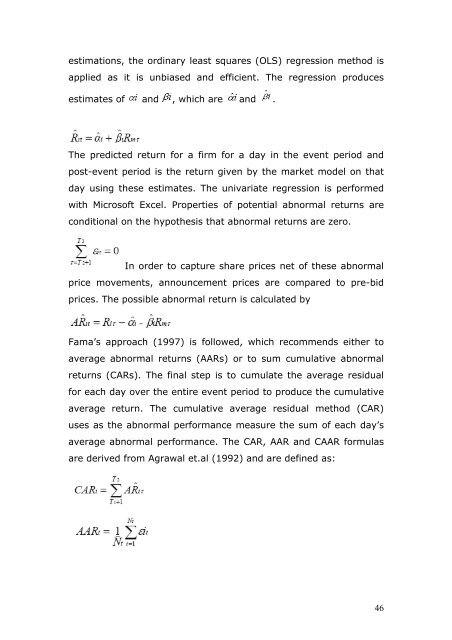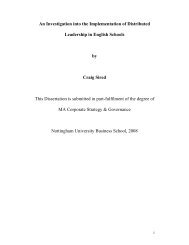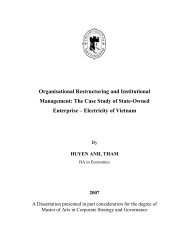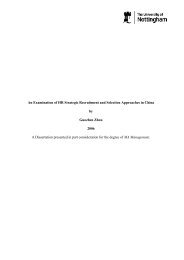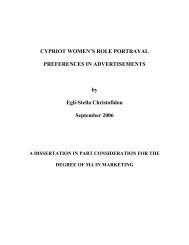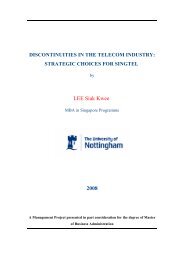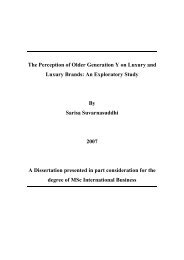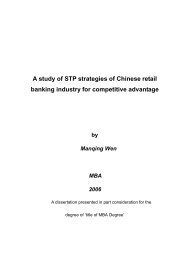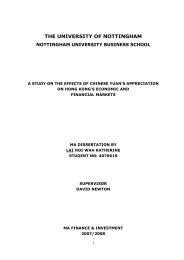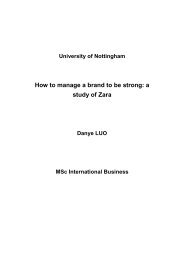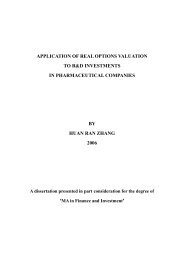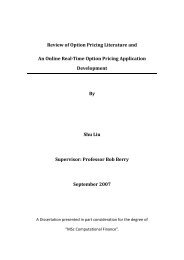Post merger profitability analysis of shareholders. Evidence from ...
Post merger profitability analysis of shareholders. Evidence from ...
Post merger profitability analysis of shareholders. Evidence from ...
Create successful ePaper yourself
Turn your PDF publications into a flip-book with our unique Google optimized e-Paper software.
estimations, the ordinary least squares (OLS) regression method is<br />
applied as it is unbiased and efficient. The regression produces<br />
estimates <strong>of</strong> and , which are and .<br />
The predicted return for a firm for a day in the event period and<br />
post-event period is the return given by the market model on that<br />
day using these estimates. The univariate regression is performed<br />
with Micros<strong>of</strong>t Excel. Properties <strong>of</strong> potential abnormal returns are<br />
conditional on the hypothesis that abnormal returns are zero.<br />
In order to capture share prices net <strong>of</strong> these abnormal<br />
price movements, announcement prices are compared to pre-bid<br />
prices. The possible abnormal return is calculated by<br />
Fama’s approach (1997) is followed, which recommends either to<br />
average abnormal returns (AARs) or to sum cumulative abnormal<br />
returns (CARs). The final step is to cumulate the average residual<br />
for each day over the entire event period to produce the cumulative<br />
average return. The cumulative average residual method (CAR)<br />
uses as the abnormal performance measure the sum <strong>of</strong> each day’s<br />
average abnormal performance. The CAR, AAR and CAAR formulas<br />
are derived <strong>from</strong> Agrawal et.al (1992) and are defined as:<br />
46


